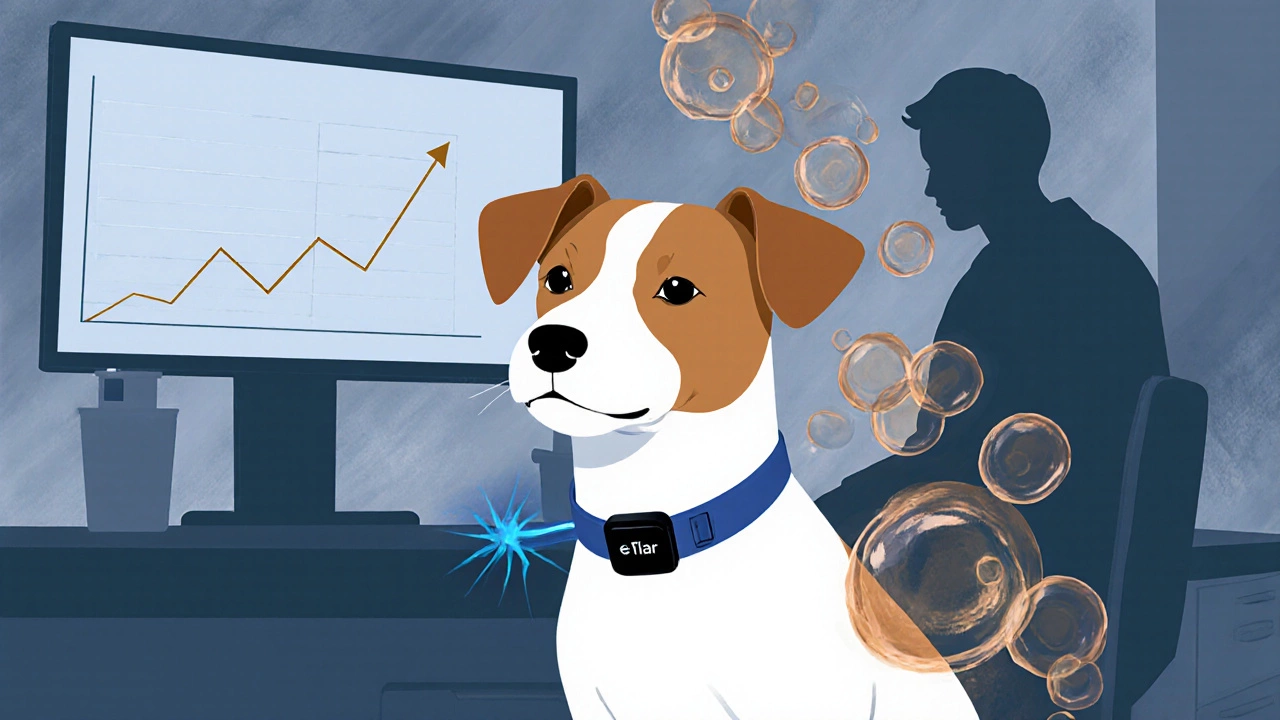E-Collar Safety Assessment
Assessment Questions
Ever caught yourself wondering if veterinarians actually like e‑collars? The short answer is: most vets are cautious, and many openly advise against routine use. Below we unpack why, what the science says, and what safe alternatives exist for training your pup.
Key Takeaways
- Vets worry about stress, misuse, and potential injury from e‑collars.
- Electronic devices are permitted in some off‑lead scenarios, but only under professional guidance.
- Positive‑reinforcement methods like clicker training are generally safer and more effective.
- If you must use an e‑collar, follow strict safety protocols and start at the lowest setting.
- Understanding your dog’s breed‑specific traits helps choose the right training tool.
What Exactly Is an E‑Collar?
E-collar is a handheld device that delivers a mild electric stimulus, a vibration, or a sound to a dog’s neck via a remote‑controlled collar. The idea is to give a quick, consistent cue that the dog can associate with a command. Settings typically range from a gentle buzz to a firmer jab, and most modern units let you program multiple levels.
How Does It Work?
The collar contains a small battery and a receiver. When the handler presses a button on the remote, a radio signal tells the collar to emit the chosen stimulus. Dogs learn that the sensation follows a specific action-like "come" or "stop barking"-and over time they may respond without the stimulus, simply by hearing the remote click.
Veterinarians’ Main Concerns
Veterinarian is a licensed professional trained to protect animal health and welfare. Their reservations fall into three buckets:
- Stress and anxiety: Studies (e.g., a 2023 University of Glasgow behavioural assessment) show that even low‑level electric pulses can raise cortisol, the stress hormone, especially in sensitive breeds.
- Potential for misuse: When owners use the highest setting or apply the collar too frequently, skin irritation, burns, or hearing damage can occur.
- Training efficacy: Many vets point out that dogs trained with punishment‑based tools often develop fear‑based behaviours, making problems harder to fix later.
The American Veterinary Medical Association (AVMA) recommends that e‑collars be a last‑resort tool, used only after consulting a qualified behaviourist.
When Might a Vet Approve an E‑Collar?
Not every opinion is a blanket ban. In specific scenarios-like off‑lead recall in open fields, or working dogs that need instant remote control-vets may sign off if the owner shows competence and the dog has no history of anxiety. The key is a formal assessment by a Dog Behaviorist who can confirm the tool’s necessity.

Safer Alternatives to Consider
| Method | How It Works | Pros | Cons |
|---|---|---|---|
| Clicker Training | Uses a handheld clicker to mark the exact moment of desired behaviour, followed by a treat. | Builds trust, low stress, quick learning. | Requires consistent treat rewards. |
| Positive Reinforcement | Rewards desired actions with praise, food, or play. | Strengthens bond, versatile across breeds. | May be slower for some commands. |
| Head Halter | Gently redirects the dog’s head when it pulls. | Effective for leash pulling, humane. | Initial awkward fit, needs training. |
| E‑Collar | Delivers electric/vibration stimulus via remote. | Instant response at distance, useful for off‑lead work. | Risk of stress, misuse, legal restrictions. |
All three non‑electric options are endorsed by the Food and Drug Administration (FDA) as safe for everyday use, whereas e‑collars fall under the “electronic device” category and are subject to stricter oversight.
Guidelines If You Choose to Use an E‑Collar
- Start low: Begin at the weakest setting and only increase if the dog shows no response after several tries.
- Limit session length: Keep each training bout under five minutes to prevent skin irritation.
- Combine with positive cues: Pair the remote click with a treat or praise so the dog learns a “reward” rather than a “punishment.”
- Monitor health: Check the collar skin daily for redness, hair loss, or swelling.
- Professional oversight: Have a certified behaviourist evaluate progress every two weeks.
Common Myths About E‑Collars Debunked
Myth 1: “E‑collars are just like a shock collar and always hurt.”
Reality: Modern e‑collars offer vibration‑only or tone‑only modes that deliver no electricity. Even the electric mode is calibrated to be uncomfortable, not painful.
Myth 2: “If a dog obeys, the collar must be working.”
Reality: Dogs can learn to avoid the stimulus without truly understanding the command, leading to “compliance” rather than “comprehension.”
Myth 3: “All vets hate e‑collars.”
Reality: While many caution against routine use, some specialists approve them for specific working‑dog tasks when used responsibly.
Putting It All Together - Decision Checklist
- Has your dog shown fear or anxiety with other methods? If yes, avoid e‑collars.
- Do you have access to a certified behaviourist for a baseline assessment?
- Are you prepared to monitor skin health and keep sessions short?
- Can you afford the time needed for positive‑reinforcement alternatives?
- Is the training scenario (off‑lead recall, working dog) a genuine reason for remote control?
If you answered “yes” to most of these, an e‑collar might be a viable tool-provided you follow the safety steps above. Otherwise, stick with clicker or positive‑reinforcement methods to keep your dog happy and healthy.

Are e‑collars legal in the UK?
Yes, they’re legal but must meet the UK’s “Electric Shock Devices” regulations, which limit maximum voltage and require clear labeling. Some local councils have additional bans on public spaces.
Can an e‑collar replace obedience classes?
No. E‑collars can supplement training but can’t teach basic commands or socialisation. Classes provide structure, peer interaction, and professional feedback that a device alone can’t offer.
What breeds are most sensitive to e‑collars?
Small or high‑energy breeds like Chihuahuas, Jack Russells, and Greyhounds often exhibit heightened stress responses. Always start at the lowest setting and watch for signs of anxiety.
How often should I replace the collar battery?
Most modern e‑collars use rechargeable lithium‑ion packs lasting 30‑40 minutes of active use. Recharge after each session; replace the battery after about 2‑3 years, or sooner if capacity drops noticeably.
Is there a risk of the collar causing hearing loss?
Vibration‑only modes are safe for ears. However, high‑volume beeping or tone modes can be uncomfortable for dogs with sensitive hearing, especially small breeds. Keep the volume low and limit exposure.

